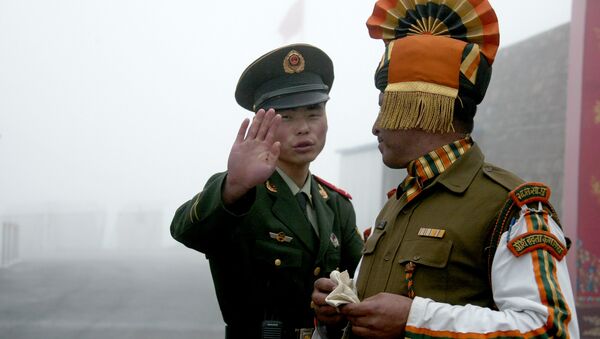Since Tuesday, Beijing and New Delhi have repeatedly accused each other of provoking clashes at the Line of Actual Control, where at least 20 Indian troops were killed on Monday night, but agreed to de-escalate tensions as soon as possible on Wednesday.
Rajeshwari Rajagopalan, a distinguished fellow at the private think-tank the Observer Research Foundation, felt the developments could not have resulted from a field-level flare-up between the two armies.
“They have been doing it with all their neighbours from the beginning of the year. You have seen the Chinese going in a very, very aggressive fashion with Indonesia, Malaysia, Philippines and to some extent Vietnam – sinking of Vietnamese fishing vessels and on the eastern side with Taiwan and we are the last one”, said Rajeshwarai.
Media reports from Beijing also indicated that the Chinese military recently conducted joint exercises “aimed at destruction of key hostile hubs in a high-elevation mountainous region”, the Chinese Army's Tibet Military Command revealed on Tuesday (16 June). The exercises involved combat forces, special operative forces, army aviation troops, electronic countermeasure forces, engineering and anti-chemical warfare troops, long-range artillery systems, and ground-to-air missile systems.
Rajeshwari felt that the standoff was bound to happen as both the Asian giants have a terrible history of having gone to war in 1962. A disputed Himalayan border was the main cause of the war almost six decades ago. Incidentally, Gulwan Valley in eastern Ladakh, where the recent clashes occurred, was also the scene of intrusions in 1962, which were a prelude to China’s military invasion of India three months later.
“After the 1962 war, it took a very, very long time for India to restore some sort of a working relation with the Chinese. But Monday’s events are now going to put back the relations by almost six decades”, she told Sputnik News.
While India accused China of “unilaterally changing the status quo”, Beijing retorted by saying that “the Indian side severely violated our consensus”.
The Chinese government has been facing backlash from within the country for its handling of the coronavirus pandemic and post-COVID-19 assistance being given to people, Rajeshwari opined. Beijing has also come under tremendous international pressure for its alleged mishandling of the global pandemic, an accusation it has consistently denied.
Rajeshwari listed several reasons for the worsening India-China relations against the backdrop of the global pandemic.
- Although India might not have pointed fingers, New Delhi has sent out a message clearly that Beijing was responsible for it (COVID-19) and the kind of economic and social damages India is suffering, along with the rest of the world.
- India’s decision to amend the Foreign Direct Investment (FDI) policy has irked the Chinese. New Delhi has made scrutiny of all FDI mandatory by the federal Trade and Industry Ministry to protect from “opportunistic takeovers/acquisitions of Indian companies due to the current COVID-19 pandemic”.
- India’s possible decision on 5G, for instance - even though New Delhi tried to play the game in a fair manner, the message has been slowly coming out that India might not go with Huawei. Even if there was a five percent chance of giving it to Huawei, now that is completely out of the window, in a sense.
“China appears to be in a big hurry. It does not want to see any peer competitor and they do see a marginal increase in the Indian position threatening it and it would do anything to put India down. This is part of the Chinese strategy to keep India bogged down within the South Asian space rather than letting India expand into the larger global space. They clearly don’t want India to do all of that. China has a problem with India’s rising profile in any scale, even marginal”, Rajeshwari rounded off.
India and China have been negotiating to settle the border disputes for the past several decades and both sides have designated special representatives for talks. They have so far held 22 rounds of talks, but the result has only been incremental.
Although both the countries in 1993 accepted the Line of Actual Control as the de facto border, they have still had differences leading to numerous flare-ups.
The LAC runs through land for the most part, but also through the Pangong Tso — a 135 kilometre-long, narrow, deep, and landlocked lake in eastern Ladakh, which covers a total area of more than 700 square kilometres. India controls the 45 km-long western portion of the lake.




